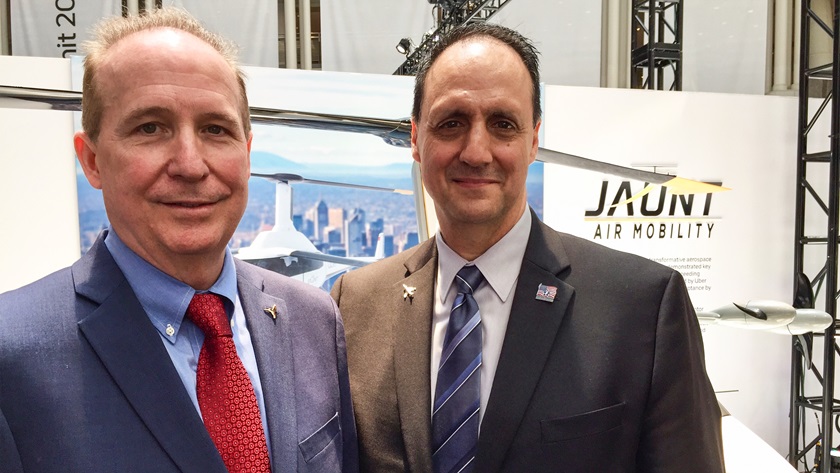New gyro-esque aircraft design joins VTOL market
New company Jaunt Air Mobility is the newest airframe partner with Uber, which is attempting to define and dominate the aerial ride-sharing concept called urban air mobility (UAM).
The aircraft company was just formed in April, leveraging the technology and concepts it bought from CarterCopter, a company that long struggled to advance and certify gyrocopters for commercial operations.
“Our goal has been to exceed Uber’s requirements and we do, including for safety and noise,” Stanzione said at the third annual Uber Elevate Summit in Washington, D.C., on June 11.
Stanzione is assisted in developing the airplane by Martin Peryea, chief technology officer. Peryea has a long history in certifying rotorcraft projects at Bell and other helicopter companies.
Jaunt is a Reduced rotor Operating Speed Aircraft (ROSA) design. Unlike a gyrocopter, the main rotor is powered, but it uses a simple rotor attach system and weighted rotor tips that maintain a high degree of inertia in the event of a power loss, allowing for a greater chance for a successful autorotation. In cruise, the rpm of the main rotor can be slowed—the ROSA part—reducing drag and noise. In a new partnership also announced at Elevate, Honeywell will source the electric motors for Jaunt as well provide system integration throughout the vehicle. And, in yet another announcement this week, Honeywell is partnering with Denso to develop electric propulsion for UAM vehicles, including the motors for Jaunt. Denso has a long history of creating motors for electric cars.
The Jaunt main rotor is powered by a large electric motor. Four smaller electric motors are mounted on the wing leading edges, with the propellers sized and spaced to provide anti-torque control—obviating the need for a tail rotor, further reducing noise. “The tail rotor is the second largest generator of noise in a helicopter—after the main rotor,” said Peryea. A small electric motor is used for taxiing only.
“Basically, Honeywell will be managing all the systems and connections inside the aircraft and Triumph Aerostructures is building the airframe itself and overseeing the certification process,” Stanzione said.
At the show, Honeywell announced a new fly-by-wire flight control system designed for small vertical takeoff and landing aircraft. The system is a derivative of the company’s airliner fly-by-wire technology and will be integrated with avionics and motor control systems throughout the aircraft.
Peryea said the aircraft will be certified under 14 CFR Part 29, the most stringent certification criteria for rotorcraft, akin to the Part 25 standards for airliners.
The Jaunt aircraft can takeoff vertically like a helicopter and can hover, unlike a gyrocopter. During cruise with the rotor slowed, the wing creates 95 percent of the lift, Peryea said.
The company is striving for a 2025 certification and will be building four aircraft for the flight test program, which is scheduled to start in 2023.
Jaunt joins Embraer, Aurora, Karem, Pipistrel, and Bell as airframe partners with Uber.





